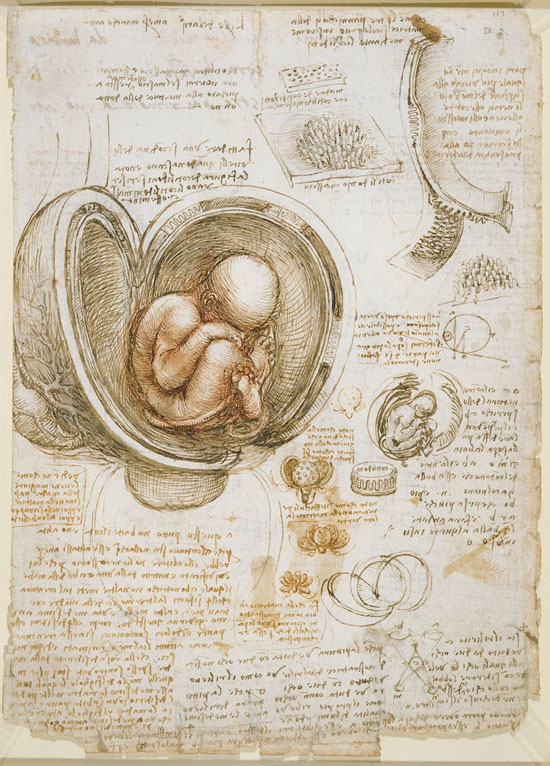Errors in the famous picture of Leonardo da Vinci
As the author of world famous paintings, Leonardo da Vinci is also known as a talented anatomist and 500-year-old sketches depicting parts of the human body exactly to the sutra. amazing. However, even geniuses sometimes make mistakes and the illustration of his female reproductive system is an example.
The cause may stem from the difficulty of finding female corpses for the research process at the time, clinical surgeon Peter Abrahams from the University of Warwick Medical School (UK) explained. .
In Leonardo's time, experts often had to dissect the unidentified corpses of drunkards or wanderers. However, these bodies are mostly male, so they do not have many research opportunities on women, Abrahams said. In addition, this is an extremely terrible work because after only 2 to 3 days, the corpses begin the process of decomposition and unpleasant odors.

Leonardo da Vinci's sketch depicts a fetus
in the womb. (Source: British Royal Collection)
But Leonardo da Vinci is still more fortunate than the Roman anatomist Galen when exposed and analyzed from the human body rather than based on animal carcasses.
Leonardo's sketches show a deep understanding of how the organs work, many of which remain valid today.
Modern anatomy has only just begun to develop in the past 60 years. Leonardo was the first person to accurately draw the curve of the spine. At the same time, he was also the first to describe the image of a fetus lying in the uterus or revealing how blood travels throughout the body - a mystery until 1628 (more than a century after his death). newly resolved.
However, many details in the drawing of female reproductive organs are not true to reality. Accordingly, the pelvis, cervix and some other parts seem more like animals than humans, Abrahams revealed.
Currently, all these drawings are in the Royal Collection and are on display at the Gallery of Queen's Gallery Buckingham Palace until early October.
Reference: Livescience
- Effort to save Leonardo Da Vinci's self-portrait
- The lost picture of Leonardo da Vinci was found in the Swiss bank
- Discover Da Vinci's 'Vitruvius' is perfect
- Leonardo da Vinci and secrets not everyone knows
- Find out the descendant of the life of Leonardo da Vinci
- The timeless designs of Leonardo da Vinci
- After nearly 500 years, scientists have discovered the secret hidden under Leonardo da Vinci's painting
- Leonardo da Vinci: Anatomy scientist
- 4 giant 'treasures' of Leonardo Da Vinci: The solution after 500 hundred years
- Discover the secret talent of the great Leonardo da Vinci
- Hair fibers are expected to make history after 500 years Leonardo da Vinci died
- Decode the faces in Leonardo Da Vinci's paintings
 Discovered an ancient centipede fossil 99 million years old
Discovered an ancient centipede fossil 99 million years old Discovered bat-like dinosaurs in China
Discovered bat-like dinosaurs in China Discovered a 200-year-old bronze cannon of the coast
Discovered a 200-year-old bronze cannon of the coast Discover 305 million-year-old spider fossils
Discover 305 million-year-old spider fossils